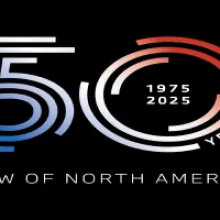SHERIDAN, WYOMING – April 8, 2025 - How BMW Reinvented Itself for the American Consumer
In the glitzy consumer culture of the 1980s, BMW skyrocketed to fame as the go-to ride for a booming class of young professionals. But by the end of the decade, that same popularity turned into a branding burden. The “Yuppiemobile” image had become a symbol of excess and elitism, alienating loyal enthusiasts and threatening the brand’s core identity. What followed was a decades-spanning journey of reinvention that saw BMW of North America transform itself through strategic pivots, deep market insight, and a renewed focus on performance.
From Wall Street to Free Fall
BMW’s rise in the 1980s was meteoric, driven by the growing Young Urban Professional—or “Yuppie”—demographic. These ambitious consumers sought luxury and performance, and BMW delivered just that. Sales surged from 37,017 cars in 1980 to nearly 97,000 by 1986.
“I was a Wall Street hotshot, moving paper assets from one side of the street to the other,” said Jeff d’Avanzo, reminiscing on his 1987 test drive of a BMW E28 535i. “He was correct, but I had an image to uphold!” A month later, the market crashed, taking d’Avanzo’s job—and BMW’s Yuppie-fueled momentum—with it.
The Cost of Popularity
The 1987 stock market crash marked the end of the Yuppie era—and a steep decline in BMW’s U.S. sales. Once the darling of upwardly-mobile professionals, BMW now carried the baggage of being a cultural cliché. “We called it the Yuppie Hangover,” said Tom McGurn, BMW of North America’s former Corporate Communications GM. “The Yuppie association was good in the beginning, but then it switched to being a symbol for greed and entitlement.”
BMW also struggled with underwhelming U.S. models that lacked the performance of their European counterparts. The grey market boom—fueled by enthusiasts desperate for higher-horsepower imports—further highlighted the disparity. Sales dropped dramatically, hitting a low of 53,343 in 1991.
Engineering for America
BMW had to pivot—fast. That meant understanding what American drivers really wanted. “Our air conditioning was terrible,” said Carl Flesher, who worked in product planning. To prove the point, he flew German engineers to Houston in August. “When they got there, they called me up and said, ‘Mr. Flesher, we got the message.’”
The brand began focusing on performance, comfort, and competitive pricing. In 1990, the price of the 735i dropped from $54,000 to $49,000, helping reinvigorate sales. Still, performance lagged. “The BMW board wanted to come out with a superior engine to anything Mercedes had,” Flesher explained, referring to the introduction of a V12. But the engine didn’t resonate with American buyers, who found it overly complex.
New Leadership, New Direction
The turning point came with the appointment of Vic Doolan as BMW NA’s president in 1992. Doolan implemented the “Champion Strategy,” placing performance at the heart of every decision. “We said, ‘We’ve got to be BMW. First and foremost, we’ve got to have performance,’” Doolan said. One of his first moves was replacing underwhelming four-cylinder engines with more potent six-cylinders.
The overhaul wasn’t limited to engines. BMW introduced four years of free maintenance, improved customer service, and launched BMW Financial Services to make leasing more accessible. “Although our retail price was higher than the Japanese, the ultimate value and cost of owning the car was comparable,” Doolan noted.
Made in America, for America
The brand doubled down on its U.S. commitment with the opening of its Spartanburg, South Carolina plant. Models like the Z3 roadster and the X5 Sport Activity Vehicle rolled off the line, blending BMW’s German engineering with features tailored to American preferences.
By 1995, BMW NA sales had rebounded to 93,309 units—just shy of the 1986 peak. A year later, they surpassed 100,000 for the first time. “Bringing performance back to the brand was really my mission,” said Rich Brekus, who took over product planning in 1995.
Back on Top—And Built to Last
With its focus firmly on performance and value, BMW reestablished itself as a driver’s brand—not a passing fad. “We were constantly working on the value aspect,” said Doolan, highlighting how the company overcame its “Break My Wallet” reputation.
By the end of the 1990s, BMW had successfully rebranded itself as The Ultimate Driving Machine—this time with staying power.
For more on BMW’s journey and current lineup, visit www.bmwusa.com.
Experience the legacy. Drive the legend.
